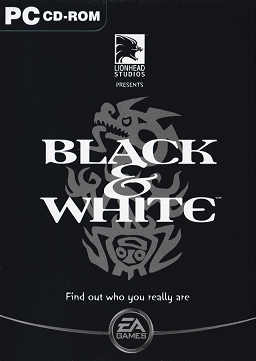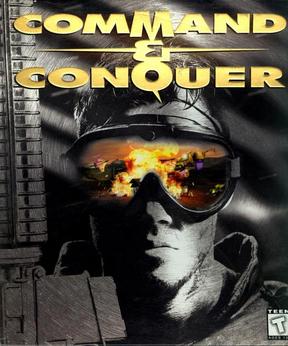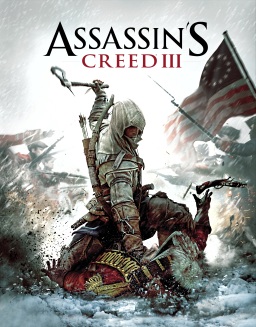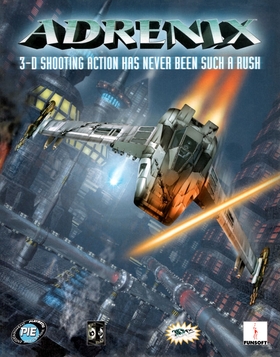
Sid Meier's Alpha Centauri is a 4X video game, considered a spiritual sequel to the Civilization series. Set in a science fiction depiction of the 22nd century, the game begins as seven competing ideological factions land on the planet Chiron ("Planet") in the Alpha Centauri star system. As the game progresses, Planet's growing sentience becomes a formidable obstacle to the human colonists.

Quake II is a 1997 first-person shooter video game developed by id Software and published by Activision. It is the second installment of the Quake series, following Quake. The game's storyline is continued in its expansions and Quake 4.

Tom Clancy's Rainbow Six is a 1998 tactical shooter video game developed and published by Red Storm Entertainment for Microsoft Windows, with later ports for the Nintendo 64, PlayStation, Mac OS, Game Boy Color, and Dreamcast. It is the first installment in the Rainbow Six series. Based on the Tom Clancy novel of the same name, the game follows Rainbow, a secret international counterterrorist organization, and the conspiracy they unravel as they handle a seemingly random spike in terrorism.

Warcraft III: Reign of Chaos is a high fantasy real-time strategy computer video game developed and published by Blizzard Entertainment released in July 2002. It is the second sequel to Warcraft: Orcs & Humans, after Warcraft II: Tides of Darkness, the third game set in the Warcraft fictional universe, and the first to be rendered in three dimensions. An expansion pack, The Frozen Throne, was released in July 2003. Warcraft III is set several years after the events of Warcraft II, and tells the story of the Burning Legion's attempt to conquer the fictional world of Azeroth with the help of an army of the Undead, led by fallen paladin Arthas Menethil. It chronicles the combined efforts of the Human Alliance, Orcish Horde, and Night Elves to stop them before they can corrupt the World Tree.

Black & White is a god video game developed by Lionhead Studios and published by Electronic Arts for Microsoft Windows in 2001 and by Feral Interactive in 2002 for Mac OS. Black & White combines elements of artificial life and strategy. The player acts as a god whose goal is to defeat Nemesis, another god who wants to take over the world. A primary theme is the concept of good and evil, with the atmosphere being affected by the player's moral choices. The core gameplay mechanic of Black & White is the interaction between the player and an avatar creature, who carries out the player's instructions and whose personality and behaviour change in reaction to how they are treated. Multiplayer is supported over a local network or online.

Freelancer is a space trading and combat simulation video game developed by Digital Anvil and published by Microsoft Game Studios. It is a chronological sequel to Digital Anvil's Starlancer, a combat flight simulator released in 2000. The game was initially announced by Chris Roberts in 1999, and following many production schedule mishaps and a buyout of Digital Anvil by Microsoft, it was eventually released in March 2003.

Space Hulk is a 1993 real-time tactical video game for MS-DOS, Amiga and PC-98. The game was based on Games Workshop's 1989 board game of the same name. Set in the fictional Warhammer 40,000 universe, the player directs squads of Space Marines, genetically enhanced armoured soldiers, in their missions to protect the human race from deadly aliens. Space Hulk was developed and published by Electronic Arts, with support from Games Workshop.

Worms Armageddon is a 1999 turn-based strategy video game developed and published by Team17. It was originally released for the Microsoft Windows operating system, and was later ported to the PlayStation, Dreamcast, Nintendo 64, and Game Boy Color. Worms Armageddon is the third installment in the Worms series. In the game, the player controls a team of up to eight earthworms tasked with defeating an opposing team using a wide range of weapons at their disposal. The game takes place on a destructible and customizable two-dimensional board and is characterized by cartoonish graphics and a unique brand of humour.

Star Wars: Rebel Assault is a rail shooter video game developed and published by LucasArts for DOS, Macintosh, Sega CD and 3DO Interactive Multiplayer systems, set in the Star Wars universe. Released in 1993, it is the first CD-ROM-only game to be published by LucasArts. The game's story focuses on a young pilot called Rookie One as they are trained by, and subsequently fights for, the Rebel Alliance in the Galactic Civil War.

Command & Conquer is a real-time strategy video game developed and published by Westwood Studios in 1995. Set in an alternate history, the game tells the story of a world war between two globalized factions: the Global Defense Initiative of the United Nations and a cult-like militant organization called the Brotherhood of Nod, led by the mysterious Kane. The groups compete for control of Tiberium, a mysterious substance that slowly spreads across the world.

Command & Conquer: Tiberian Sun is a 1999 real-time strategy video game developed by Westwood Studios, published by Electronic Arts, and released exclusively for Microsoft Windows on August 26, 1999. The game is the sequel to the 1995 game Command & Conquer. It featured new semi-3D graphics, a more futuristic sci-fi setting, and new gameplay features such as vehicles capable of hovering or burrowing. The main story of the game focuses on a second war between the UN-backed Global Defense Initiative (GDI) and the cult-like Brotherhood of Nod, both seeking to rule over an Earth which is undergoing rapid ecological collapse.

Darklight Conflict is a space combat simulator video game developed by Rage Software and published by Electronic Arts in 1997 for PCs running MS-DOS or versions of Microsoft Windows before Windows 2000, and the Sega Saturn and Sony PlayStation game consoles. Players take on the part of a contemporary human fighter pilot abducted by the alien Repton species during an aerial battle, and biologically modified to become a starfighter pilot for them in their war against the Evil Ovon race.

Two Worlds is a 2007 high fantasy action role-playing game developed by Reality Pump and published by TopWare Interactive in Europe and by SouthPeak Games in North America for the Xbox 360 and Microsoft Windows. A sequel, Two Worlds II, was released in Europe in 2010 and in North America in 2011.

Assassin's Creed is an action-adventure game developed by Ubisoft Montreal and published by Ubisoft. It is the first installment in the Assassin's Creed series. The video game was released for PlayStation 3 and Xbox 360 in November 2007. A Microsoft Windows version titled Assassin's Creed: Director's Cut Edition containing additional content was released in April 2008.

Command & Conquer 3: Tiberium Wars is a 2007 science fiction real-time strategy video game developed and published by Electronic Arts for Windows, Mac OS X and Xbox 360 platforms, and released internationally in March 2007. The game is a direct sequel to the 1999 game Command & Conquer: Tiberian Sun, and takes place roughly seventeen years after the game's expansion pack Firestorm, in which Tiberium has grown to become a considerable threat to the planet, leading to the world's political borders and territories being remade into zones denoting the level of contamination by the alien substance. The game's story sees the Global Defense Initiative and the Brotherhood of Nod engage in a new global conflict, this time as major superpowers, only for the war to attract the attention of a new extraterrestrial faction known as the Scrin, which attacks both sides while harvesting Tiberium for its own purpose.

Lego Rock Raiders is a video game developed by Data Design Interactive and published by Lego Media for Microsoft Windows and PlayStation. It is based on the Lego theme of the same name. The Windows version was released in 1999, while a differently built game for PlayStation was released in 2000.

Assassin's Creed III is a 2012 action-adventure video game developed by Ubisoft Montreal and published by Ubisoft. It is the fifth major installment in the Assassin's Creed series, and a direct sequel to 2011's Assassin's Creed: Revelations. The game was released worldwide for PlayStation 3 and Xbox 360, beginning in North America on October 30, 2012, with a Wii U and Microsoft Windows release in November 2012. A remastered version of the game was released in 2019 for Windows, PlayStation 4, Xbox One and Nintendo Switch, and in 2021 for Google Stadia.

Assassin's Creed: Brotherhood is a 2010 action-adventure video game developed by Ubisoft Montreal and published by Ubisoft. It is the third major installment in the Assassin's Creed series, and the second chapter in the "Ezio Trilogy", as a direct sequel to 2009's Assassin's Creed II. The game was first released on the PlayStation 3 and Xbox 360 in November and December 2010 and was later made available on Microsoft Windows in March and June 2011. A remastered version of Brotherhood, along with Assassins's Creed II and its sequel, Assassin's Creed: Revelations, was released as part of The Ezio Collection compilation for the PlayStation 4 and Xbox One on November 15, 2016, and for the Nintendo Switch on February 17, 2022.

Assassin's Creed IV: Black Flag is a 2013 action-adventure video game developed by Ubisoft Montreal and published by Ubisoft. It is the sixth major installment in the Assassin's Creed series. Its historical timeframe precedes that of Assassin's Creed III (2012), but its modern-day sequences succeed III's own. Black Flag was originally released for PlayStation 3, Xbox 360, and Wii U in October 2013 and a month later for PlayStation 4, Windows, and Xbox One. It was later ported to the Nintendo Switch as part of The Rebel Collection alongside Assassin's Creed Rogue in December 2019. The game was released for Google Stadia in September 2021.

Adrenix is a 1998 first-person shooter video game created by developer Digital Dialect and published by Playmates Interactive Entertainment.





















